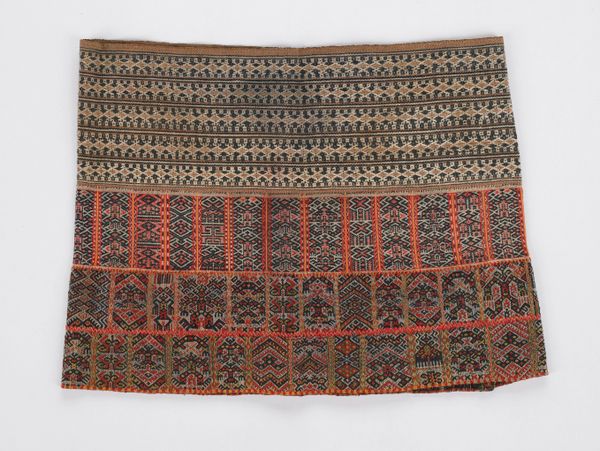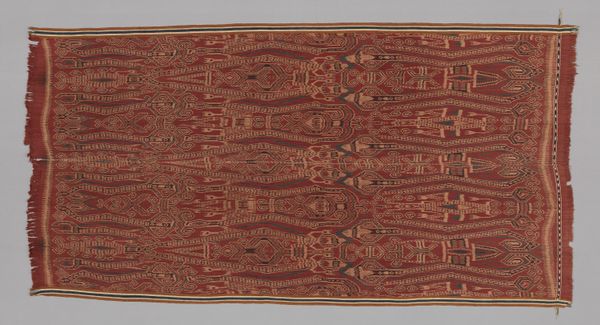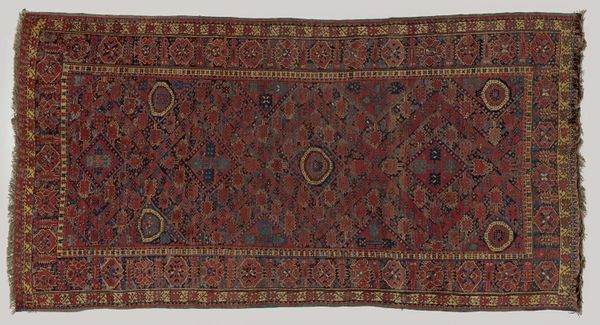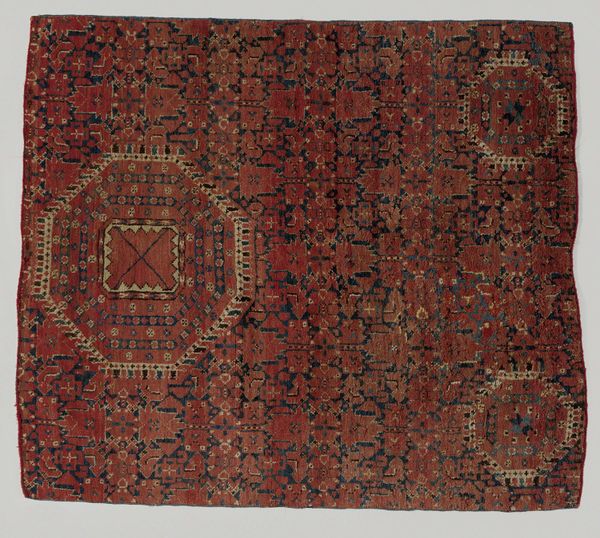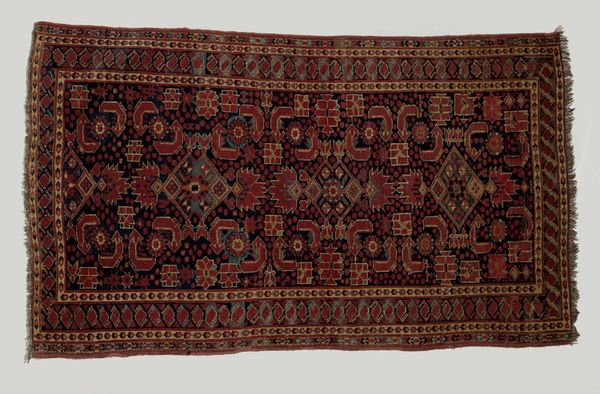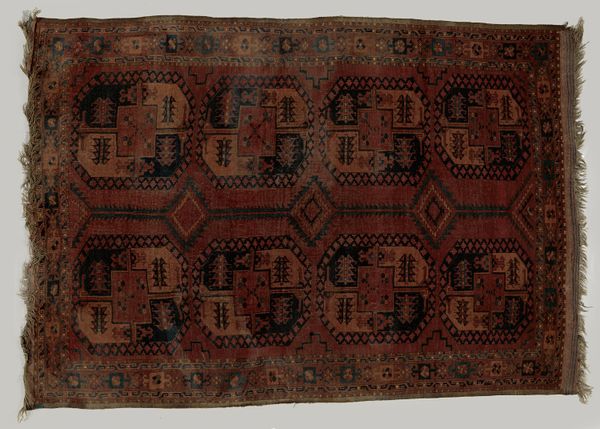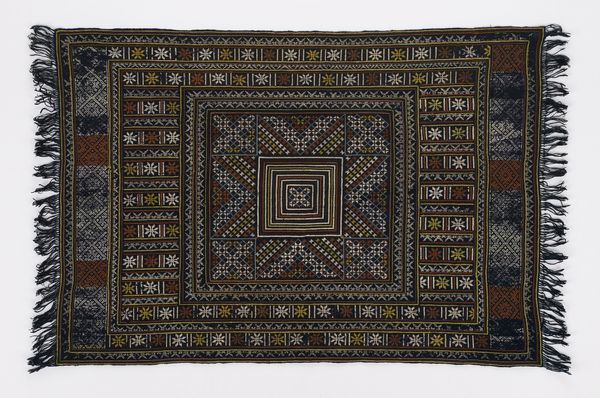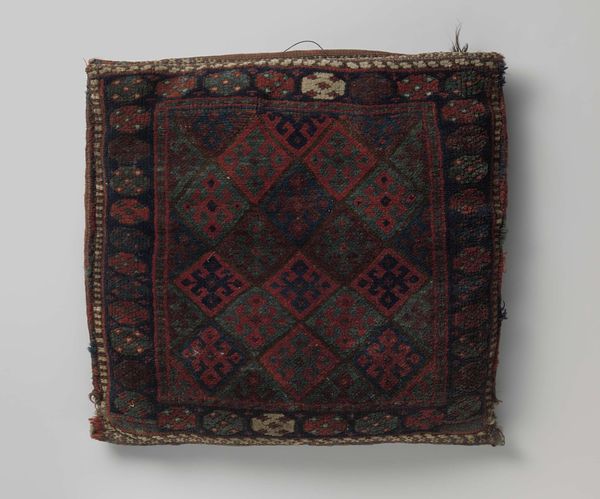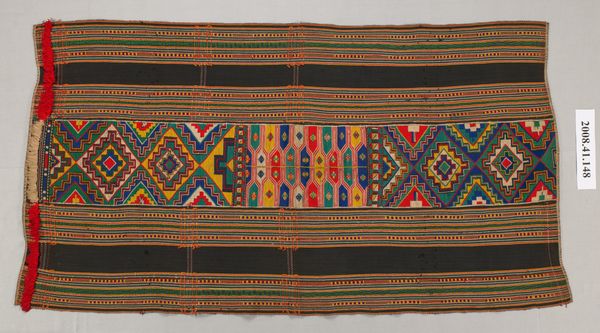
fibre-art, weaving, textile
#
natural stone pattern
#
fibre-art
#
naturalistic pattern
#
asian-art
#
weaving
#
textile
#
geometric pattern
#
pattern design
#
repetitive shape and pattern
#
organic pattern
#
geometric
#
repetition of pattern
#
regular pattern
#
pattern repetition
#
layered pattern
Dimensions: 10 15/16 x 15 15/16 in. (27.78 x 40.48 cm)
Copyright: Public Domain
Curator: Welcome. We're standing before an intriguing object in the collection: a skirt, likely dating from the 20th century, of Chinese origin. It’s crafted using cotton and various weaving techniques. Editor: My immediate impression is how grounded it feels. The colors are rich, earthy reds and browns, with subtle geometric patterns creating a sense of history. Curator: Absolutely. Garments like this existed not just as clothing, but as embodiments of cultural identity, and also status, right? The creation of intricate textiles involved considerable labor and skill. Looking closer, you can really see how its composition is divided into distinct horizontal registers each filled with detailed ornamentation. Editor: The repetition in each register gives it a structured yet organic vibe. And look how motifs evolve and adapt in the layers. It speaks of generations of textile traditions, with individual creativity subtly shining through. This isn't simply an item; it represents generations. I’m thinking about the labor involved. Curator: Indeed. From a social historical viewpoint, examining pieces like this skirt requires understanding China's economic context. These are tangible representations of artistic expression and commerce. This particular piece is housed right here at the Minneapolis Institute of Art. Its presence in this institution tells us much about what's valued and considered worthy of display and preservation in Western cultural institutions. Editor: The presence of such items in Western collections should spur broader dialogue on provenance, repatriation, and ethical collecting practices. We need to discuss whose stories get prioritized and whose artistic heritage has been historically marginalized or appropriated. We can’t ignore power imbalances inherent in exhibition. Curator: You're right. Objects hold multiple truths. Analyzing this skirt involves thinking about economics and artistic talent, as well as critically reviewing curatorial practices. It is about cultural expression, and colonial legacies, and it also provokes contemporary discourse around identity and representation. Editor: Exactly. By contemplating the "Skirt," we touch on conversations far wider than textiles and design. It makes one realize we still must ensure fairer access, recognition, and proper regard for art created by marginalized communities worldwide.
Comments
No comments
Be the first to comment and join the conversation on the ultimate creative platform.
